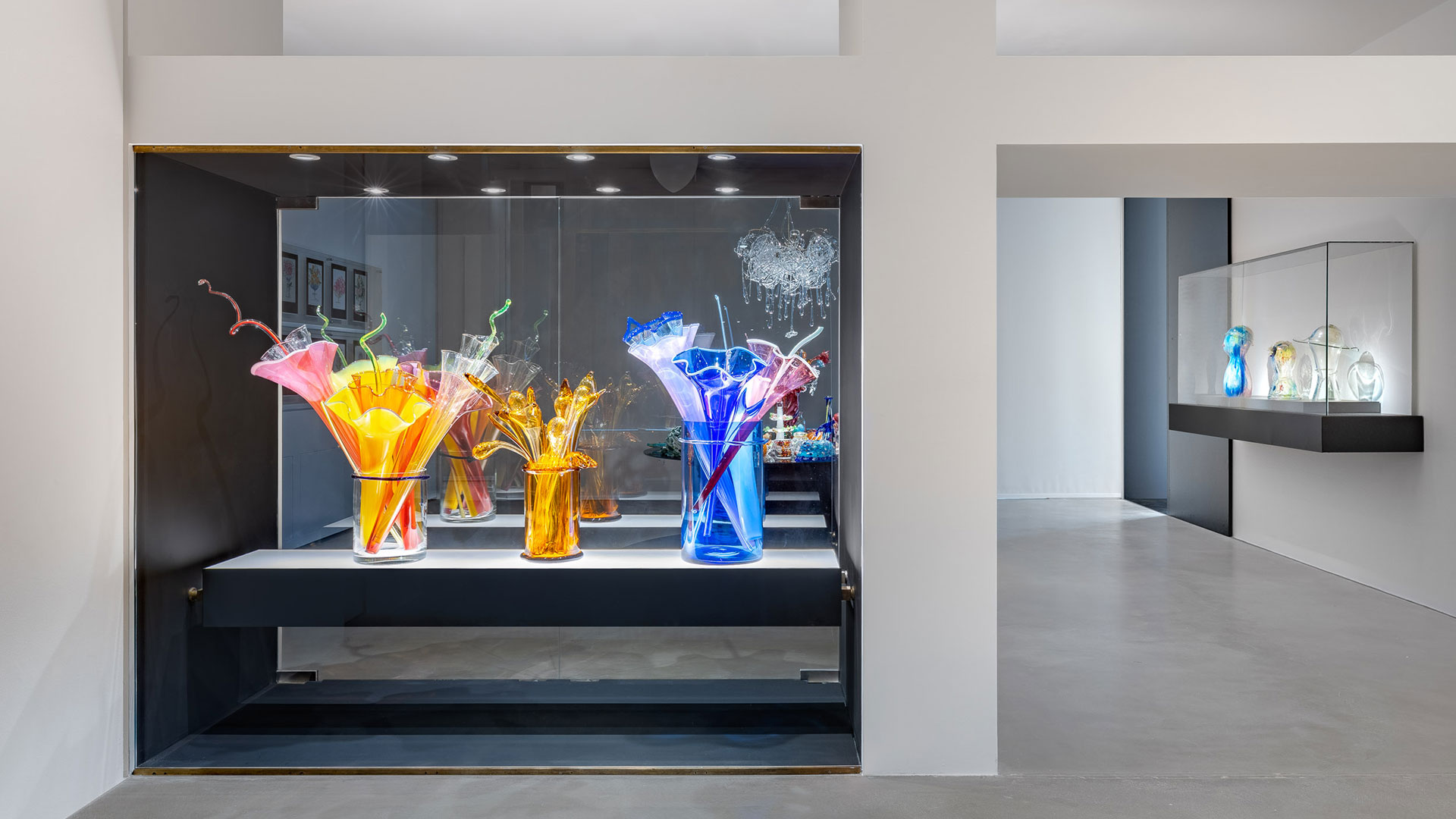A crossover of Murano and Bohemian glass, their associated cultures, history, and application, is explored in a new exhibition titled Bohemian Glass: The Great Masters. Curated by Caterina Tognon and Sylva Petrova, the showcase dwells on understanding how the two cultures that for centuries have sought to outdo or copy each other, found their distinct expressions in the 20th century. Eclectic works chronicling the evolution of the craft across the two regions are presented within LE STANZE DEL VETRO gallery, on the Island of San Giorgio Maggiore in Venice– a space dedicated to the study and promotion of modern and contemporary glassmaking.
The showcase recounts the emancipation of Bohemian glass from its traditional categorisation as applied and decorative art, as well as its use in the creation of influential abstract sculptural works in Bohemia after World War II. The exhibition brings together works of leading figures from the 1920s and 1930s glassmaking scene of Bohemia, the ancient name of the largest of lands that makes up the present day Czech Republic. Works by Václav Cigler, Vladimír Kopecký, Stanislav Libenský and Jaroslava Brychtová, René Roubíček, and Miluše Roubíčková, artists who initiated the categorization of artistic glass in the region, grace the showcase. This includes hand-blown works emulating the form of a bouquet of flowers, optic crystal artworks, industrial glass making up abstract paintings, and technical interventions such as casting. Along with these, photographs by Czech photographer Josef Sudak (1896-1976) from the 1970 exhibition Contemporary Bohemian Glass in Prague are also part of the exhibition. The visuals, part of the ‘Glass Labyrinths’ series reinterpret the intrinsic relationship between glass and light taken by Sudak himself, who was often referred to as “the poet of Prague”.
Glassmaking in Bohemia took off in the 12th century and has continued to grow since, with glass artisans continually shaping and augmenting their impact on European glass. A perennial push engulfed the creatives to innovate in view of the burgeoning demands of the European market, particularly centres in Germany and Italy that were hubs of meticulously crafted decorative glass. This link however between the two regions was discontinued in 1948 when Czechoslovakia was taken over by the Communist regime, leaving the country’s borders sealed off for over 40 years. With Bohemian Glass: The Great Masters, curators Caterina Tognon and Sylva Petrova intend to bring to the world a glimpse into the journey of a few ethereal artworks that were created in the midst of no freedom and prosperity, and how a few artists’ perseverance reimagined the glassmaking scene in the region. “These artists endured the largest-ever military conflict in Europe, followed by a brief respite of freedom and democracy, only to be plunged into totalitarian domination in 1948, which they could finally shed to return to standards of European democracy after 1989,” states the curatorial note. “It is remarkable that, despite all the negative effects, they managed to overcome these challenges and grow their art in the broader context of the development of certain artistic disciplines in erstwhile Czechoslovakia.”
Taking centre-stage within the exhibition are works by artists and partners in real life, Miluše Roubíčková (1922–2015) and René Roubíček (1922–2018). Roubíčková’s presentation encompasses “a representation of the female world that is far ahead of its time,” as per the curators. Glass paraphernalia such as flowers bouquets, pastries trays, balls of coloured wool and jam jars reveal meticulous craftsmanship by him. On the other hand, Roubíček’s seemingly serene multi-coloured handblown glass pieces contrast the challenging journey of the artist during the communal regime. Václav Cigler’s late 60s optic crystal artworks are expressions of purity and minimalism.
Adding a performative layer to the showcase are site-specific mixed media glass pieces by Czech painter and glassmaker Vladimír Kopecký (1931). The 91-year-old artist’s oeuvre is characterised by the use of transparent industrial glass as a ‘canvas’ for abstract, highly chromatic paintings. Intervening with technicalities in the art of glassmaking, artist couple Stanislav Libenský (1921-2002) and Jaroslava Brychtová (1924-2020) who explored open mould casting through their research-based practice of the 60s are also part of the exhibition. According to the curators, “For over sixty years, Libenský and Brychtová investigated its technical possibilities and came up with works that were majestic in size, as well as remarkable in their purity of colour and transparency.”
Beyond physical artefacts and photographs, a series of five films produced between the 1980s to now are also included in the show. Visitors could peek into the journey of the exhibiting artists through immersive documentation. Curated in collaboration with the Museum of Decorative Arts in Prague, the Bohemian Glass: The Great Masters is on view till November 26, 2023.






 Sign in with email
Sign in with email










What do you think?